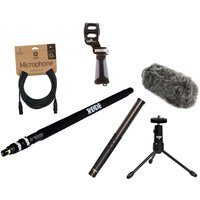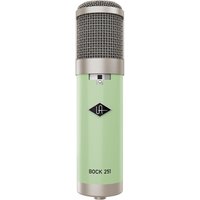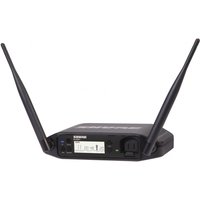
The Rode NTG4 is a broadcast-quality directional condenser microphone that builds on the success of the NTG1 shotgun microphone. It is designed to provide premium audio recording in various applications, including on-camera and boom-mounted setups. The microphone body features convenient digital switching that allows you to control the in-built high-pass filter pad and high-frequency boost. These settings are persistent, meaning they will be retained even when the microphone is switched off. The NTG4 also boasts a new condenser capsule from Rode, which offers a low noise floor, higher sensitivity, and a rich, smooth character.
Included in this pack are additional accessories to enhance your recording experience. The Rode Dead Cat high wind cover helps minimize wind noise, while the 2m mini boompole allows for easy and flexible positioning of the microphone. The PG2 pistol grip and shock mount provide stability and reduce handling noise. Additionally, the pack comes with a 10ft XLR (M) to XLR (F) microphone cable from Planet Waves and a VideoMic Tripod for added convenience.
For more information about the Rode NTG4 and its features, you can visit the provided link.
The Rode NTG4 offers broadcast sound quality with its low noise circuitry and rugged metal construction. Its convenient digital switching allows for easy control over the high-frequency boost and high-pass filter (with options for flat or 75Hz). The microphone also has a PAD option for -10db attenuation.
In terms of specifications, the NTG4 features a 0.50″ capsule and a supercardioid polar pattern. Its frequency range is from 20Hz to 20kHz (75Hz with the high-pass filter engaged). The output impedance is 200 ohm and the maximum SPL is 135dB SPL (@ 1kHz 1% THD into a 1K ohm load). The sensitivity is -32.0dB re 1 Volt/Pascal (25.00mV @ 94 dB SPL) +/- 2 dB @ 1kHz. The equivalent noise level (A-weighted) is 16dB-A. The microphone can be powered with +12V, +24V, or +48V phantom power. It weighs 126 grams and has dimensions of 225mmH x 22mmW x 22mmD. The output is an XLR output.
CHECK PRICES AT ZZOUNDS



